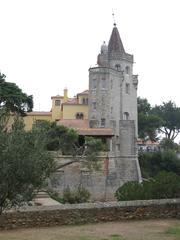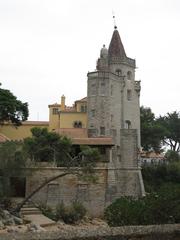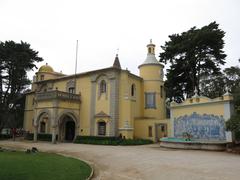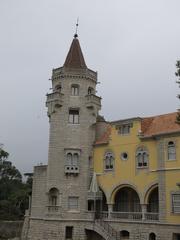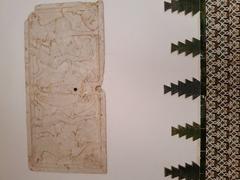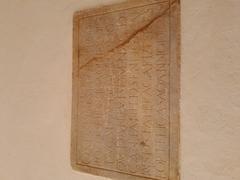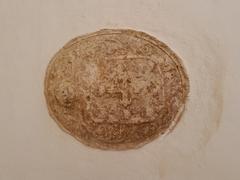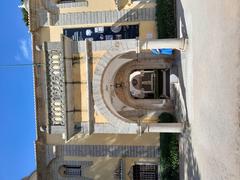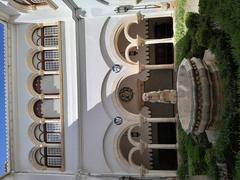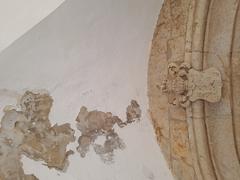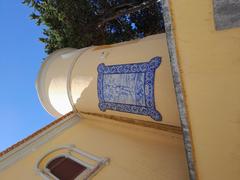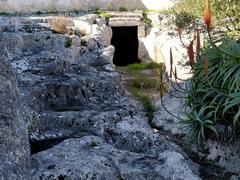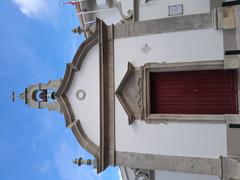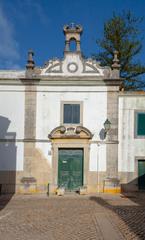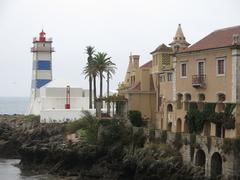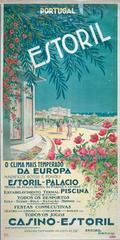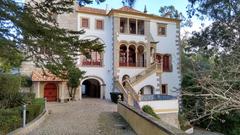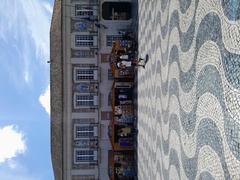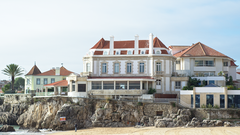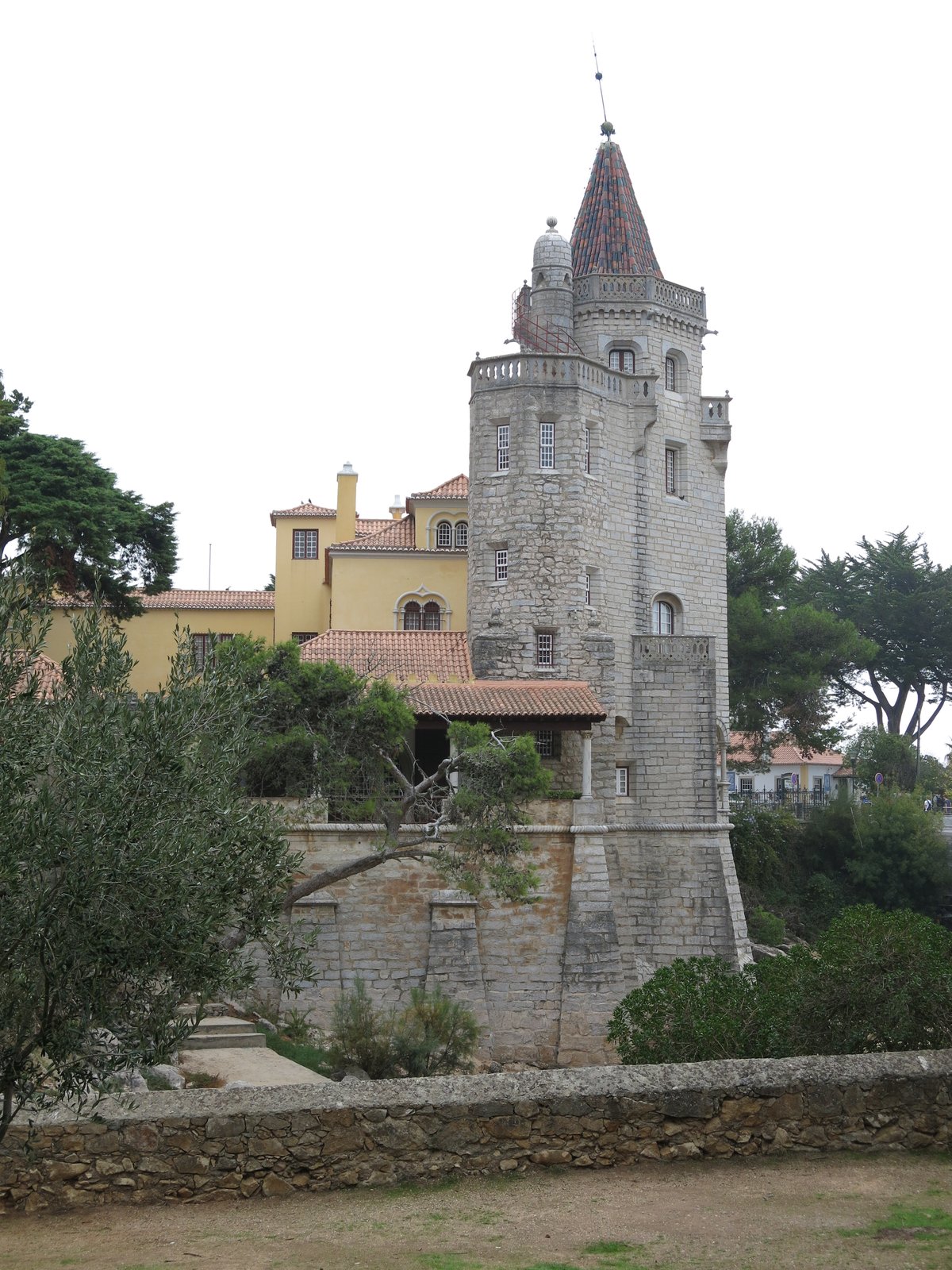
Condes de Castro Guimarães Palace: Visiting Hours, Tickets, and Estoril Historical Sites Guide
Date: 14/06/2025
Introduction
Nestled on the Atlantic coastline in Cascais near Estoril, Portugal, the Condes de Castro Guimarães Palace is a remarkable example of aristocratic heritage and architectural eclecticism. Commissioned at the end of the 19th century by Jorge O’Neill and later transformed under the ownership of Count Manuel de Castro Guimarães, the palace now operates as a museum and cultural center. Its collections, historical manuscripts, and extensive library, together with its lush gardens in Parque Marechal Carmona, make it a must-visit for anyone interested in the rich tapestry of Portuguese history, art, and architecture (Wikipedia; Portugal Visitor; Cascais Portugal Tourism; 360 Cascais; Estoril Portugal; SIPA Monumentos).
This detailed guide provides essential information on the palace’s origins, architectural highlights, museum collections, visiting hours, tickets, accessibility, and nearby attractions, ensuring a seamless and enriching experience for visitors to this Cascais landmark.
Table of Contents
- Historical Overview
- Architectural and Cultural Significance
- Museum Collections
- Visitor Information
- Gardens and Surroundings
- Nearby Attractions
- Frequently Asked Questions (FAQ)
- Visuals and Media Suggestions
- Conclusion
- References and Further Reading
Historical Overview
Origins and Early History
The palace, originally named Torre de São Sebastião, was conceived by Jorge O’Neill, an influential aristocrat of Irish descent, who sought to create a residence that reflected both his cosmopolitan heritage and the eclectic tastes of European nobility at the time. Construction began in 1897, led by architect Francisco Vilaça, and was completed in 1900. The building’s design is a harmonious fusion of neo-Gothic, neo-Manueline, Moorish, and Italianate styles, resulting in a romantic, historic ambiance. O’Neill’s financial troubles in the early 20th century led him to sell the property in 1910 (Wikipedia; Portugal Visitor).
The Count’s Era and Cultural Legacy
In 1910, Count Manuel de Castro Guimarães, a prominent banker and art collector, acquired the palace. Under his stewardship, the interiors were enhanced and the residence filled with his extensive collections of art, rare books, decorative arts, and personal memorabilia. Notable among these is the illuminated manuscript “Chronicle of Don Afonso Henriques” (1505), a national treasure for its early colored depiction of Lisbon. The Count and Countess, who had no heirs, devoted their lives to enriching the palace’s cultural legacy (Estoril Portugal; Cascais Portugal Tourism).
Transition to Museum
Upon his death in 1927, Count Castro Guimarães bequeathed the estate, together with its contents and library, to Cascais for use as a museum and public library. The Museu-Biblioteca Condes de Castro Guimarães opened in 1931, quickly establishing itself as a cultural hub in the region (Wikipedia). The museum’s leadership included several prominent cultural figures, and its library has grown to more than 25,000 volumes.
Architectural and Cultural Significance
The palace is celebrated for its unique synthesis of architectural styles. Neo-Gothic battlements, Manueline windows, Moorish arches, and Italian-inspired verandas signal the cosmopolitan influences of its era. The interior features grand halls, stained glass, intricate woodwork, and decorative tilework, including the music room with a custom-built pneumatic organ and a library housed in the former Neo-Gothic Hall. The palace’s integration with the surrounding Parque Marechal Carmona and proximity to a 16th-century chapel further enrich its cultural significance (Portugal Visitor; Cascais-Portugal.com; 360 Cascais).
Museum Collections
The museum’s collections reflect the eclectic and cosmopolitan tastes of its founders. Highlights include:
- The illuminated “Chronicle of Don Afonso Henriques” (1505)—one of Portugal’s most important manuscripts (Cascais Portugal Tourism).
- Indo-Portuguese, French, English, and Chinese furniture—spanning the 16th to 19th centuries.
- Decorative arts: Chinese and Japanese porcelain, Sevres pieces, Oriental rugs, and Portuguese silverware.
- Paintings and sculpture—from Portuguese and European artists, including Romantic and Naturalist works.
- Arms and armor—displayed in the Torreão or Sala de Armas.
- Extensive library—with rare manuscripts, early printed books, and resources on Portuguese history and maritime heritage.
The museum organizes temporary exhibitions, concerts, and educational programs throughout the year (official museum site).
Visitor Information
Location and Getting There
- Address: Avenida Rei Humberto II de Itália, Parque Marechal Carmona, 2750-319 Cascais (Visit Cascais)
- Transport: The palace is a 15–20 minute walk from Cascais train station, easily reached from Lisbon via the coastal train line (Portugal Visitor).
Opening Hours
- Tuesday to Sunday: 10:00–18:00 (last admission 30 minutes before closing)
- Closed: Mondays, Easter Sunday, May 1st, Christmas Day, and New Year’s Day (Cascais 360; Estoril Portugal)
Tickets and Prices
- General admission: €5.00
- Discounts: 50% for seniors, students, and Cascais residents; 40% for FNAC cardholders; 25% off for family groups (7+)
- Combo ticket: €12.00 includes return train from Lisbon and access to all municipal museums
- Children under 12: Free
- First Sunday of each month: Free entry (360 Cascais)
Accessibility and Facilities
- Wheelchair access to main areas; some historic sections may be limited due to stairs.
- Restrooms, café, gift shop, and picnic tables in the park.
- Audio guides and brochures available in multiple languages.
Guided Tours and Activities
- Guided tours can be booked in advance for individuals and groups, enhancing the visit with expert insight into the palace’s history and art.
- Regular family-friendly workshops and cultural events are held on site (Cascais 360).
Gardens and Surroundings
The palace sits within Parque Marechal Carmona, a 7-hectare public park featuring manicured gardens, mature trees, tranquil ponds, and winding paths. The gardens, originally designed for aristocratic leisure, now offer:
- Seaside views over Santa Marta cove.
- Sculptures, fountains, and decorative features.
- Benches and shaded pathways for relaxation.
- Botanical diversity with Mediterranean and exotic species.
- Wildlife such as ducks and peacocks.
- Children’s play areas and picnic spots ideal for families.
A unique aspect of the grounds is the small cemetery where the Counts of Castro Guimarães are buried. The park’s integration with the palace creates a peaceful setting for visitors and locals alike (Cascais 360).
Nearby Attractions
- Santa Marta Lighthouse and Museum—a short walk from the palace, offering maritime history and panoramic coastal views.
- Cascais Marina—restaurants, cafes, and boat tours.
- Historic Center of Cascais—shops, galleries, and traditional eateries.
- Casa das Histórias Paula Rego—a museum dedicated to the renowned Portuguese artist.
- Museu do Mar—focused on local maritime heritage.
Frequently Asked Questions (FAQ)
Q: What are the visiting hours for Condes de Castro Guimarães Palace?
A: Tuesday to Sunday, 10:00–18:00. Closed Mondays and select holidays.
Q: How much are tickets?
A: €5.00 general admission; discounts and free entry for children under 12 and on the first Sunday of each month.
Q: Are guided tours available?
A: Yes, bookable in advance for individuals and groups.
Q: Is the palace accessible?
A: Most main areas are wheelchair accessible; some historic sections may have limited access.
Q: Can I visit the gardens without a museum ticket?
A: Yes, Parque Marechal Carmona is open to the public daily.
Q: Is photography allowed?
A: Permitted in most areas, but flash and tripods may be restricted inside the museum.
Q: Can I bring my dog?
A: Pets are not allowed inside the palace, but leashed dogs are welcome in the park.
Visuals and Media Suggestions
- Palace Exterior: Photo of the palace façade with Santa Marta cove in the background.
- Sala de Música: Interior shot featuring the pneumatic organ and tilework.
- Azulejos Tilework: Close-up images of decorative tiles in the music room.
- Illuminated Manuscript: Image of the “Crónica de D. Afonso Henriques” (1505).
- Park and Gardens: Views of the gardens, ponds, and shaded pathways.
- Interactive Maps: Location of the palace relative to Cascais train station and local attractions.
High-quality imagery with relevant alt text will improve user engagement and SEO.
Conclusion
The Condes de Castro Guimarães Palace stands as a cornerstone of Cascais’ historical and cultural landscape. Its blend of architectural innovation, rich collections, and beautiful gardens offers a multifaceted experience that appeals to history enthusiasts, art lovers, and families alike. An essential stop on any visit to the Estoril Coast, the palace provides a window into Portugal’s aristocratic legacy and artistic achievements.
Plan your visit today:
- Check the latest hours and ticket options.
- Book a guided tour for deeper insights.
- Explore the gardens and nearby attractions for a full day of discovery.
Download the Audiala app for exclusive audio guides, follow us on social media for updates, and browse our related articles on Cascais cultural sites to make the most of your trip.
References and Further Reading
- Wikipedia: Palácio dos Condes de Castro Guimarães
- Portugal Visitor
- Cascais Portugal Tourism
- Estoril Portugal
- SIPA Monumentos
- 360 Cascais
- Official Museum Site
- Visit Cascais
